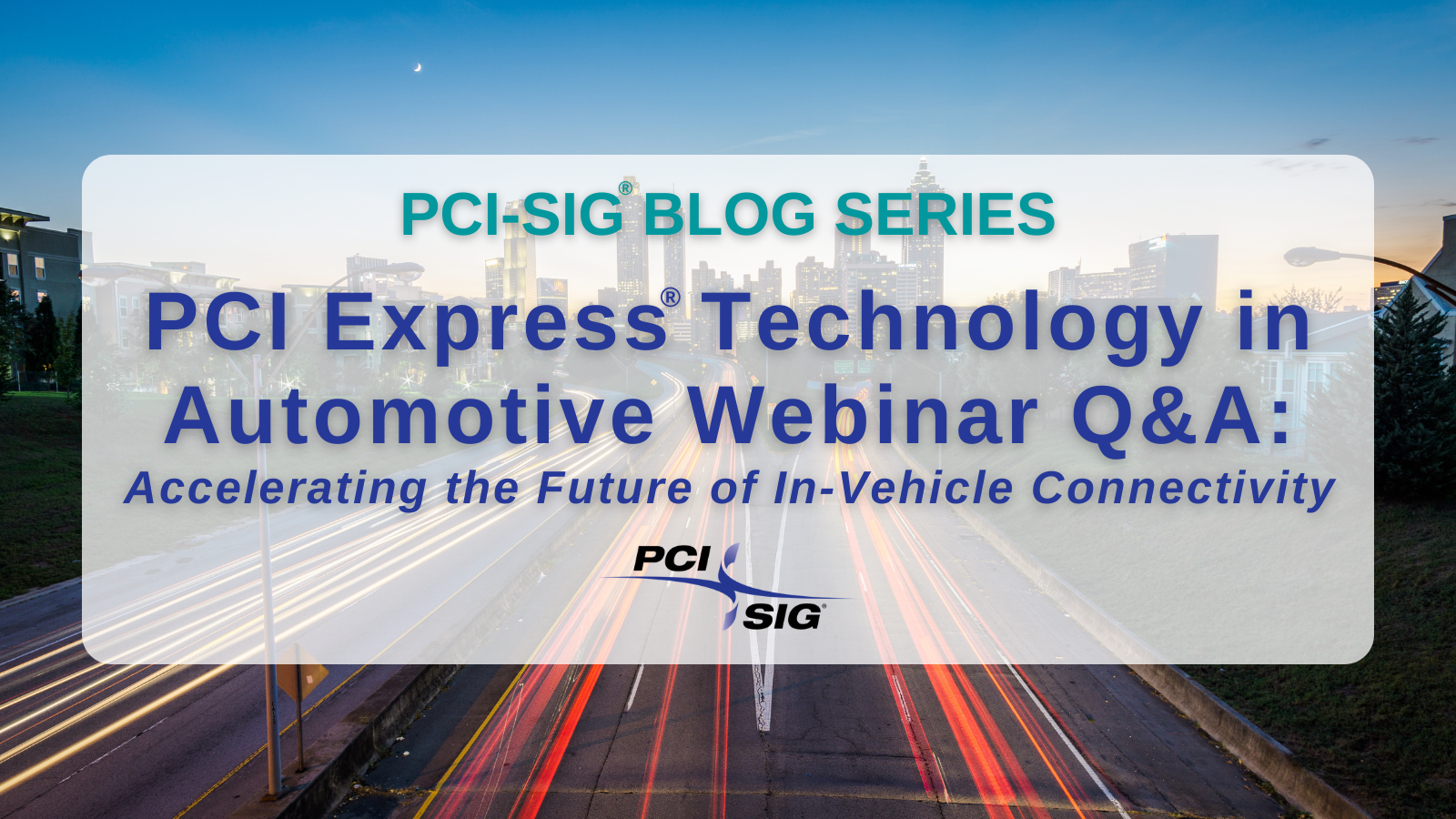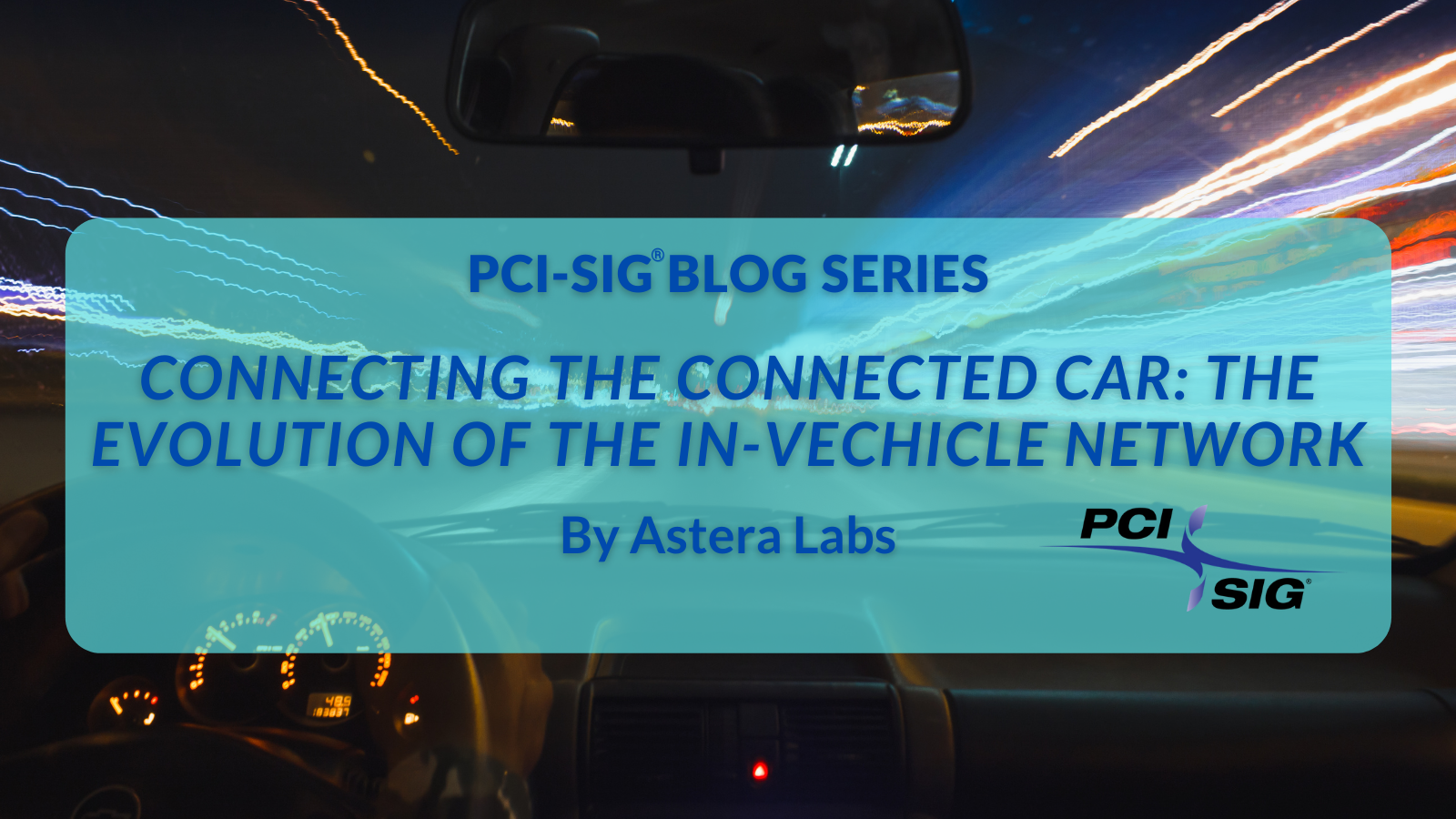Latest Posts

With the emergence of autonomous vehicles, AI-based advanced driver assistance systems (ADAS) and in-vehicle infotainment (IVI), today’s automobiles are becoming high-tech “servers on wheels.” PCI Express® (PCIe®) technology is expanding to become the interconnect of choice in automotive applicat
- Systems & Applications
- automotive
- PCIe
- PCI Express
- PCIe Retimer
- PCIe connectivity
- PCIe CEM
- PCIe Security
- PCIe low power
- PCI-SIG Automotive Taskforce.

By: Hope Bovenzi, Strategic Marketing, Astera Labs
- Signal Integrity
- automotive
- PCIe
- PCI Express
- PCIe Storage
- PCIe Retimer
- PCIe connectivity
- PCIe Bandwidth
- PCI-SIG Automotive Taskforce
The PCI Express® (PCIe®) 6.0 specification will provide multiple features, including Transaction Layer Packet (TLP) payload, encoding and decoding, shared credit pooling, Forward Error Correction (FEC), CRC error correction, and more.
- Standards & Compliance
- PCI-SIG Automotive Taskforce
Many online resources cover the history and current state of industry development for the concept that, in Integrity and Data Encryption (IDE), we refer to as a Trusted Execution Environment (TEE).
- Systems & Applications
- Trusted Execution Environments
PCI Express® (PCIe®) technology is the most important high-speed serial bus in servers. Due to its high bandwidth and low latency characteristics, PCI Express architecture is widely used in various server interconnect scenarios, such as:
- Signal Integrity
- PCIe 5.0
- PCI Express 5.0
- PCIe CEM
- PCIe Channel Loss
PCI-SIG® has enabled PCI Express® (PCIe®) technology to be cost-effective and easy to implement by supporting multiple form factors for a variety of applications.
- Physical Form Factors
- PCIe 5.0
- PCI Express 5.0
- PCIe CEM
- PCIe Card Electromechanical Connector
